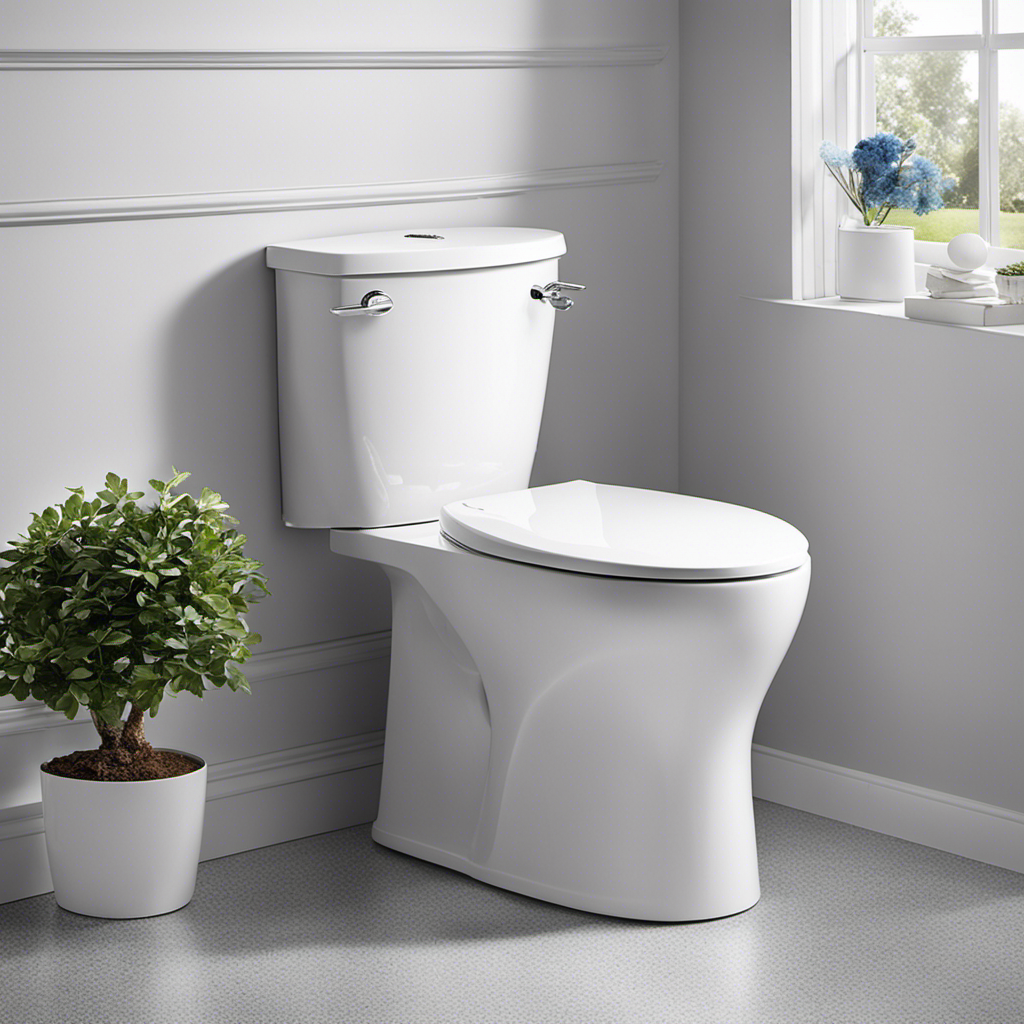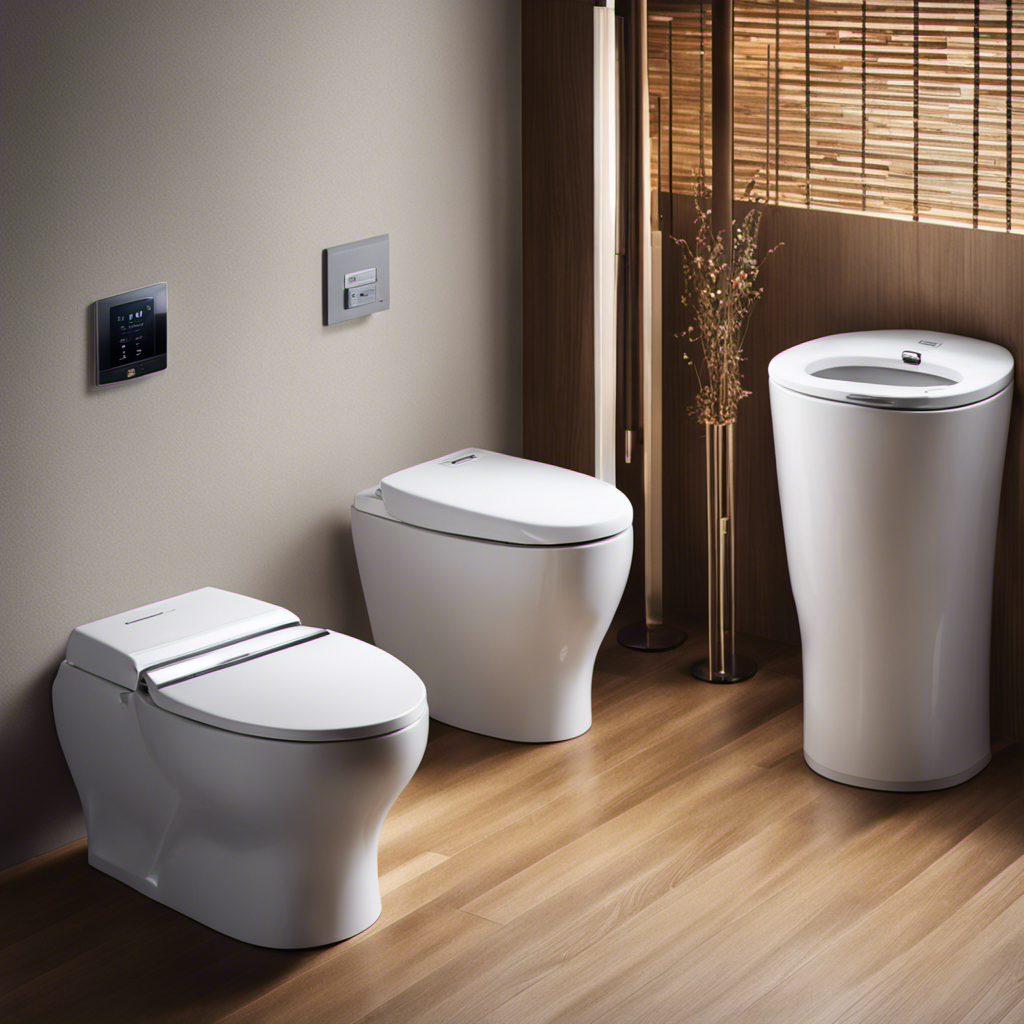Have you ever experienced the frustration of a sliding toilet seat? It’s not only annoying, but it can also be a safety hazard. As someone who has dealt with this issue firsthand, I understand the importance of finding a solution.
In this article, I will guide you through the steps to keep your toilet seat from sliding. We will explore different non-slip options, install anti-slip devices, and discuss maintenance tips to ensure a secure and stable toilet seat.
Let’s put an end to the sliding seat dilemma once and for all.
Key Takeaways
- Loose or worn-out bolts can cause the seat to slide
- Non-slip solutions such as rubberized grips or adhesive-backed rubber pads can enhance stability and safety
- Installing anti-slip devices like tightened bolts, new bumpers, and adhesive pads can prevent accidents caused by sliding seats
- Regularly checking and maintaining the hardware, tightening bolts and screws, and replacing worn or damaged bumpers can ensure a secure toilet seat and prevent wobbling
Understanding the Problem
To prevent your toilet seat from sliding, you need to understand the problem and its causes. A loose toilet seat can be a nuisance and potentially dangerous.
There are several causes for a toilet seat sliding, including loose or worn-out bolts, damaged hinges, or an uneven toilet bowl surface. Loose bolts are often the main culprit, as they can cause the seat to shift and become unstable. This can lead to accidents and injuries, especially for older adults or individuals with mobility issues.
A loose toilet seat can also create hygiene problems, as it may not provide a secure and comfortable seating surface. It is important to address these issues promptly to prevent any potential dangers and ensure a stable and secure toilet seat.
Assessing the Current Setup
Take a moment to evaluate how the toilet seat is currently positioned and secured. Is it stable or does it wobble when you sit on it? Identifying potential hazards is crucial for ensuring your safety and preventing accidents.
Here are a few things to consider:
- Are the hinges tight and in good condition? Loose hinges can cause the seat to slide or detach.
- Is the seat properly aligned with the toilet bowl? Misalignment can lead to instability and discomfort.
- Check for any cracks or damage on the seat itself. A damaged seat may compromise its stability and pose a risk.
Evaluating the stability of your toilet seat is essential for maintaining a safe and comfortable bathroom experience. By identifying potential hazards, you can take appropriate measures to address them and ensure a secure seating arrangement.
Exploring Non-slip Solutions
Exploring non-slip solutions can enhance the stability and safety of your bathroom experience. When it comes to keeping your toilet seat from sliding, there are a few options to consider. First, choosing the right toilet seat is crucial. Look for seats with rubberized grips or adjustable brackets that can help keep it securely in place. Additionally, there are several DIY non-slip solutions you can try. One popular method is using adhesive-backed rubber pads or strips. Simply attach them to the underside of the seat to provide extra grip. Another option is using silicone caulk or epoxy adhesive to create a non-slip surface. These solutions can be easily applied and provide a durable grip. Check out the table below for a visual representation of these options:
| Solution | Description | Pros | Cons |
|---|---|---|---|
| Rubberized grips | Toilet seat with built-in rubber grips | Easy to install, long-lasting | Limited styles available |
| Adhesive rubber pads/strips | Rubber pads or strips attached to the underside of the seat | Cost-effective, customizable | May need to be replaced over time |
| Silicone caulk/epoxy adhesive | Applied to create a non-slip surface | Strong grip, durable | Requires more effort to apply |
Installing Anti-slip Devices
Choose from a variety of anti-slip devices to enhance the stability and safety of your bathroom experience. Installing these devices can prevent accidents caused by a sliding toilet seat, providing peace of mind and comfort.
Here are some common causes of sliding toilet seats and DIY solutions to address them:
- Loose bolts: Tighten the bolts that secure the seat to the toilet bowl using a screwdriver or wrench.
- Worn-out bumpers: Replace the old bumpers with new ones to provide a better grip and prevent sliding.
- Adhesive pads: Apply adhesive pads to the underside of the seat to increase friction and reduce movement.
By addressing these issues, you can ensure a secure and stable toilet seat that stays in place, minimizing the risk of slips and falls.
Take the necessary steps to enhance the safety of your bathroom and enjoy a worry-free experience.
Maintaining a Secure Toilet Seat
To ensure your bathroom experience remains stable and secure, it’s important to regularly check and maintain the hardware that attaches your toilet seat to the bowl.
Preventing toilet seat wobbling requires proper installation and periodic maintenance. Start by ensuring that the bolts connecting the seat to the bowl are tightened securely. Use a screwdriver or wrench to tighten them if needed.
Additionally, check the hinges that connect the seat to the bowl. If they are loose, tighten the screws or bolts that hold them in place.
It’s also important to inspect the rubber bumpers located on the underside of the seat. If they are worn or damaged, replace them to ensure a secure fit.
Conclusion
In conclusion, I’ve provided a comprehensive guide on how to keep your toilet seat from sliding.
By understanding the problem, assessing your current setup, exploring non-slip solutions, installing anti-slip devices, and maintaining a secure toilet seat, you can ensure a stable and secure seat every time you use the bathroom.
Don’t let a slippery toilet seat ruin your comfort and safety. Take action now and enjoy a worry-free bathroom experience.
Trust me, your posterior will thank you!










